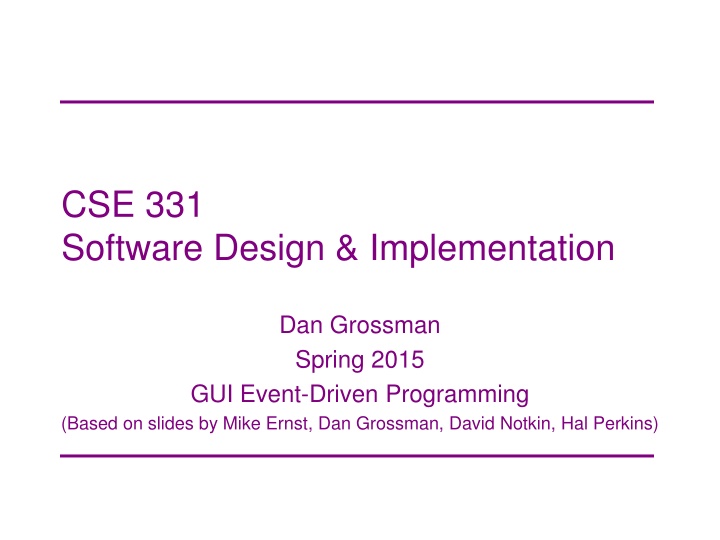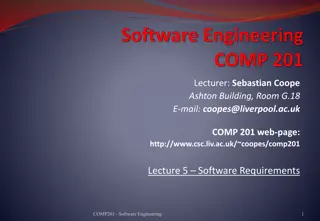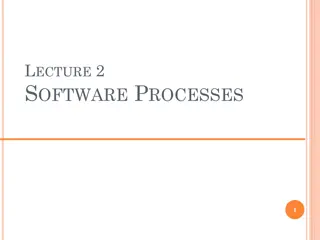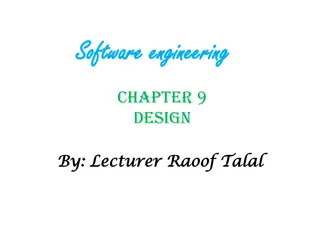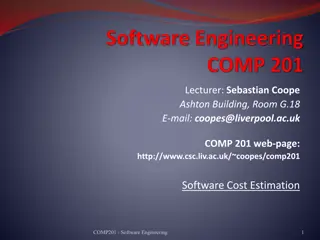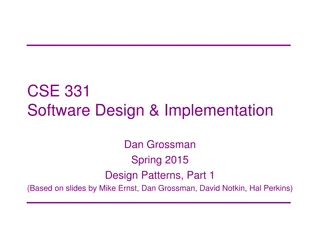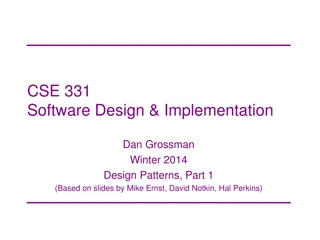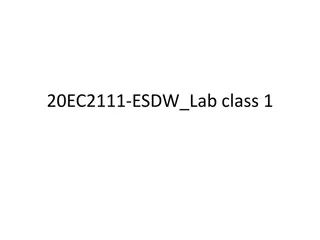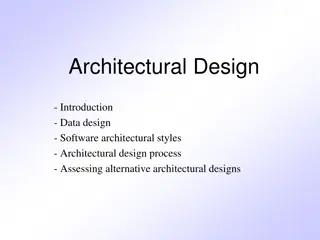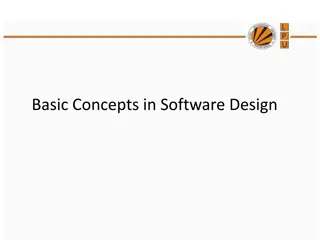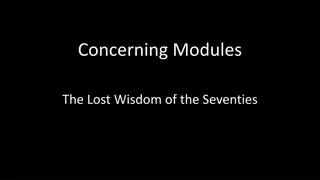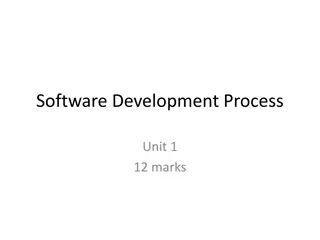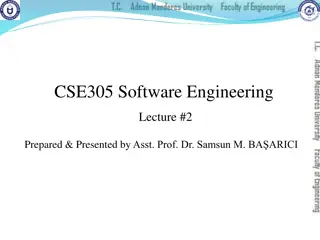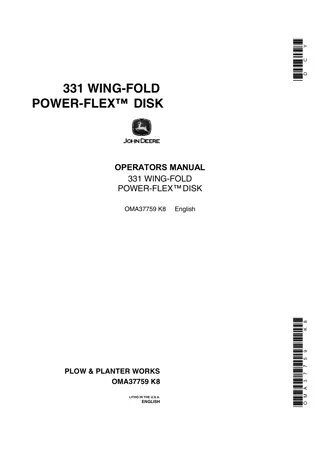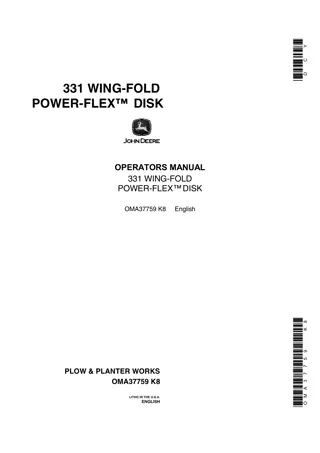CSE 331 Software Design & Implementation
This content delves into GUI event-driven programming, discussing the basics of handling events, types of GUI events, Java AWT/Swing event handling, event objects, and proper interaction between UI and program threads.
Download Presentation

Please find below an Image/Link to download the presentation.
The content on the website is provided AS IS for your information and personal use only. It may not be sold, licensed, or shared on other websites without obtaining consent from the author.If you encounter any issues during the download, it is possible that the publisher has removed the file from their server.
You are allowed to download the files provided on this website for personal or commercial use, subject to the condition that they are used lawfully. All files are the property of their respective owners.
The content on the website is provided AS IS for your information and personal use only. It may not be sold, licensed, or shared on other websites without obtaining consent from the author.
E N D
Presentation Transcript
CSE 331 Software Design & Implementation Dan Grossman Spring 2015 GUI Event-Driven Programming (Based on slides by Mike Ernst, Dan Grossman, David Notkin, Hal Perkins)
The plan User events and callbacks Event objects Event listeners Registering listeners to handle events Anonymous inner classes Proper interaction between UI and program threads CSE331 Spring 2015 2
Event-driven programming Many applications are event-driven GUI programs: Program initializes itself on startup then enters an event loop Abstractly: do { e = getNextEvent(); process event e; } while (e != quit); Contrast with application- or algorithm-driven control where program expects input data in a particular order Typical of large non-GUI applications like web crawling, payroll, data simulation, CSE331 Spring 2015 3
Kinds of GUI events Typical events handled by a GUI program: Mouse move/drag/click, button press, button release Keyboard: key press or release, sometimes with modifiers like shift/control/alt/etc. Finger tap or drag on a touchscreen Joystick, drawing tablet, other device inputs Window resize/minimize/restore/close Network activity or file I/O (start, done, error) Timer interrupt (including animations) CSE331 Spring 2015 4
Events in Java AWT/Swing Many (most?) of the GUI widgets can generate events (button clicks, menu picks, key press, etc.) Handled using the Observer Pattern: Objects wishing to handle events register as observers with the objects that generates them When an event happens, appropriate method in each observer is called As expected, multiple observers can watch for and be notified of an event generated by an object CSE331 Spring 2015 5
Event objects A Java GUI event is represented by an event object Superclass is AWTEvent Some subclasses: ActionEvent GUI-button press KeyEvent keyboard MouseEvent mouse move/drag/click/button Event objects contain information about the event UI object that triggered the event Other information depending on event. Examples: ActionEvent text string from a button MouseEvent mouse coordinates CSE331 Spring 2015 6
Event listeners Event listeners must implement the proper interface: KeyListener, ActionListener, MouseListener (buttons), MouseMotionListener(move/drag), Or extend the appropriate library abstract class that provides empty implementations of the interface methods When an event occurs, the appropriate method specified in the interface is called: actionPerformed, keyPressed, mouseClicked, mouseDragged, An event object is passed as a parameter to the event listener method CSE331 Spring 2015 7
Example: button Create a JButton and add it to a window Create an object that implements ActionListener (containing an actionPerformed method) Add the listener object to the button s listeners ButtonDemo1.java CSE331 Spring 2015 8
Which button is which? Q: A single button listener object often handles several buttons. How to tell which button generated the event? A: an ActionEvent has a getActionCommand method that returns (for a button) the action command string Default is the button name (text), but usually better to set it to some string that will remain the same inside the program code even if the UI is changed or translated. See button example. Similar mechanisms to decode other events CSE331 Spring 2015 9
Listener classes ButtonDemo1.java defines a class that is used only once to create a listener for a single button Could have been a top-level class, but in this example it was an inner class since it wasn t needed elsewhere But why a full-scale class when all we want is to create a method to be called after a button click? Alas, no lambdas (function closures) before Java 8 A more convenient shortcut: anonymous inner classes CSE331 Spring 2015 10
Anonymous inner classes Idea: define a new class directly in the new expression that creates an object of the (new) anonymous inner class Specify the superclass to be extended or interface to be implemented Override or implement methods needed in the anonymous class instance Can have methods, fields, etc., but not constructors But if it starts to get complex, use an ordinary class for clarity (nested inner class if appropriate) Warning: ghastly syntax ahead CSE331 Spring 2015 11
Example Class or interface being extended/implemented (can include constructor parameters) new expression to create class instance Method call parameter list button.addActionListener(new ActionListener(){ public void actionPerformed(ActionEvent e) { model.doSomething() } } ); Implementation of method for this anonymous class Brackets surrounding new class definition CSE331 Spring 2015 12
Example ButtonDemo2.java CSE331 Spring 2015 13
Program thread and UI thread Recall that the program and user interface are running in separate, concurrent threads All UI actions happen in the UI thread including the callbacks like actionListener or paintComponent, etc. defined in your code After event handling and related work, call repaint() if paintComponent() needs to run. Don t try to draw anything from inside the event handler itself (as in you must not do this!!!) Remember that paintComponent must be able to do its job by reading data that is available whenever the window manager calls it CSE331 Spring 2015 14
Event handling and repainting program window manager (UI) Remember: your program and the window manager are running concurrently: actionPerformed(e) Program thread User Interface thread repaint() It s ok to call repaint from an event handler, but never call paintComponent yourself from either thread. paintComponent(g) CSE331 Spring 2015 15
Working in the UI thread Event handlers should not do a lot of work If the event handler does a lot of computing, the user interface will appear to freeze up (Why?) If there s lots to do, the event handler should set a bit that the program thread will notice: Do the heavy work back in the program thread. (Don t worry finding a path for campus maps should be fast enough to do in the UI thread) CSE331 Spring 2015 16
Synchronization issues? Yes, there can be synchronization problems (cf. CSE332, CSE451, ) Not usually an issue in well-behaved programs, but can happen Some advice: Keep event handling short Call repaint when data is ready, not when partially updated Don t update data in the UI and program threads at the same time (particularly for complex data) Never call paintComponent directly (Have we mentioned you should never call paintComponent? And don t create a new Graphics object either.) CSE331 Spring 2015 17
Larger example bouncing balls A hand-crafted MVC application. Origin is somewhere back in the CSE142/3 mists. Illustrates how some swing GUI components can be put to use. Disclaimers: Not the very best design Unlikely to be directly appropriate for your project Use it for ideas and inspiration, and feel free to steal small bits if they really fit Enjoy! CSE331 Spring 2015 18
